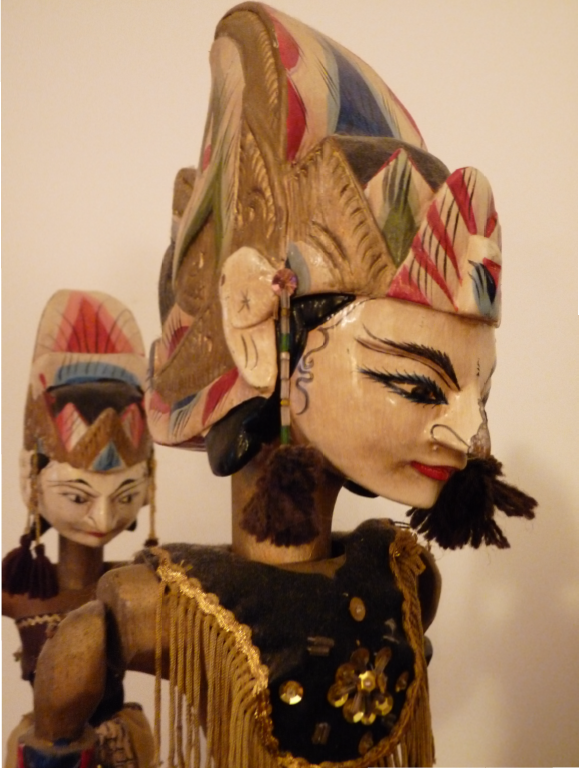Puppets

Burmese
Wayang
Burmese marionette puppetry, or Ahyokekyoka, performances have taken place at least since 1444, and developed over the following 300 years to become one of the most refined global puppet traditions. Like most refined Burmese art, the marionette performances originated under royal patronage and were gradually adapted for the wider populace. In this case, prohibitions against holding one's head above that of the king encouraged the development of performing arts featuring nonhuman figures.
The popularization of Ahyokekyoka took place around 1780 during the reign of Singu Min and is credited to the Minister of Royal Entertainment, U Thaw. From this point, marionettes grew in popularity in the courts of the Konbaung dynasty. Few of the fundamentals of the performances have changed since the time of U Thaw, and the same set of characters developed by 18th century puppeteers have been in use even since. Until the conquest of Upper Burma by the British in late 1885, marionette troupes enjoyed royal patronage and thrived due to its financial support.
Despite this, puppet shows were often used as critiques of royal policies or as commentary on sources of public discontent. Puppet shows are almost always performed in operas, and the marionettes themselves are extremely intricate and demand a high level of dexterity to manipulate, as they employ 18 (for male characters) or 19 (for female) wires, each puppet controlled only by one puppeteer. The complexity of the wiring allows the figures to move with remarkable grace and realism, and dance is a central part of any puppet performance.
After a long period of decline under British rule, in the late 1990s, General Khin Nyunt of the ruling junta lent official support to the marionette actors and troupes, reviving a rapidly dying tradition. Marionettes are now very common in tourist attractions and also among the Burmese public, as they resume their role of mild political satirists and safe outlets for popular discontent.
"Wayang," which is derived from the old Javanese word for shadow, is a generic term denoting traditional puppet theatre in Indonesia. As there is no evidence that wayang existed before the first century AD, after Hinduism and Buddhism were brought to Southeast Asia, it is generally believed that the art was imported from either India or China, both of which have a long tradition of shadow puppetry and performing art in general. Though wayang shows a very strong influence from South Asian theatre in particular, it is a uniquely Javanese art form, and indigenous storytelling traditions certainly had a profound impact on the development of the traditional puppet theatre. Wayang is perhaps the most famous Indonesian art and a unique form of theatre. It is today both the most ancient and most popular living form of puppetry in the world - hundreds of people will stay up all night long to watch the superstar dalang or puppeteers, who command huge fees and are international celebrities.
The first record of a wayang performance is from an inscription dated 930 AD, and from that time until the present many features of traditional puppet theatre have remained intact. The plays are invariably based on romantic tales, especially adaptations of the classic Indian epics, the Mahabharata and the Ramayana. Some of the plays are also based on local histories or other secular stories, and over the centuries many distinctly Javanese characters have become central to the wayang cast. It is up to the dalang or master puppeteer to decide his direction. The importance of the dalang cannot be exaggerated. Along with manipulating the figures and performing all the parts, he is also often the primary craftsman of the puppets. The dalang is considered to be a figure of substantial creative and spiritual power, and successful political figures are often compared to them, just as Indonesian politics and culture are regularly viewed through the metaphor of the wayang itself.
Nelson South East Asia Collection © 2025
